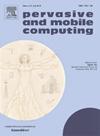INLEC: 适用于物联网的非连续低能耗轻量级区块密码
IF 3.5
3区 计算机科学
Q2 COMPUTER SCIENCE, INFORMATION SYSTEMS
引用次数: 0
摘要
物联网(IoT)已成为全球技术革命和产业转型的关键力量。尽管物联网技术不断进步,但物联网设备仍然面临着巨大的安全挑战,尤其是在数据传输过程中,而且往往受到有限的电池寿命和能源资源的限制。为了应对这些挑战,我们提出了一种低能耗的轻量级区块密码(INLEC),以减少物联网设备中的数据泄漏。此外,还介绍了结构和组件 INvolution(SCIN)设计。它使用两个相似的轮函数来实现前后对称。这种设计确保了 INLEC 加密和解密过程的一致性,并解决了置换置换网络(SPN)解密阶段资源消耗增加的问题。此外,通过结合遗传编程(GP)的硬件门级电路搜索方法生成了低面积 S-box。与 Midori 的 S0 相比,采用 0.18μm UMC 技术的这一优化方案可减少 47.02% 的面积。此外,还使用混沌函数生成基于 nibble 的最佳渐开线排列,进一步提高了效率。在性能方面,INLEC 的加密和解密能耗均为 6.88 μJ/bit,与 Midori 相比降低了 25.21%。最后,INLEC 利用 STM32L475 PanDuoLa 和 Nexys A7 FPGA 开发板实现,为物联网设备建立了一个加密平台。该平台提供数据采集、传输和加密功能。本文章由计算机程序翻译,如有差异,请以英文原文为准。
INLEC: An involutive and low energy lightweight block cipher for internet of things
The Internet of Things (IoT) has emerged as a pivotal force in the global technological revolution and industrial transformation. Despite its advancements, IoT devices continue to face significant security challenges, particularly during data transmission, and are often constrained by limited battery life and energy resources. To address these challenges, a low energy lightweight block cipher (INLEC) is proposed to mitigate data leakage in IoT devices. In addition, the Structure and Components INvolution (SCIN) design is introduced. It is constructed using two similar round functions to achieve front–back symmetry. This design ensures coherence throughout the INLEC encryption and decryption processes and addresses the increased resource consumption during the decryption phase in Substitution Permutation Networks (SPN). Furthermore, a low area S-box is generated through a hardware gate-level circuit search method combined with Genetic Programming (GP). This optimization leads to a 47.02% reduction in area compared to the of Midori, using UMC technology. Moreover, a chaotic function is used to generate the optimal nibble-based involutive permutation, further enhancing its efficiency. In terms of performs, the energy consumption for both encryption and decryption with INLEC is 6.88 J/bit, representing 25.21% reduction compared to Midori. Finally, INLEC is implemented using STM32L475 PanDuoLa and Nexys A7 FPGA development boards, establishing an encryption platform for IoT devices. This platform provides functions for data acquisition, transmission, and encryption.
求助全文
通过发布文献求助,成功后即可免费获取论文全文。
去求助
来源期刊

Pervasive and Mobile Computing
COMPUTER SCIENCE, INFORMATION SYSTEMS-TELECOMMUNICATIONS
CiteScore
7.70
自引率
2.30%
发文量
80
审稿时长
68 days
期刊介绍:
As envisioned by Mark Weiser as early as 1991, pervasive computing systems and services have truly become integral parts of our daily lives. Tremendous developments in a multitude of technologies ranging from personalized and embedded smart devices (e.g., smartphones, sensors, wearables, IoTs, etc.) to ubiquitous connectivity, via a variety of wireless mobile communications and cognitive networking infrastructures, to advanced computing techniques (including edge, fog and cloud) and user-friendly middleware services and platforms have significantly contributed to the unprecedented advances in pervasive and mobile computing. Cutting-edge applications and paradigms have evolved, such as cyber-physical systems and smart environments (e.g., smart city, smart energy, smart transportation, smart healthcare, etc.) that also involve human in the loop through social interactions and participatory and/or mobile crowd sensing, for example. The goal of pervasive computing systems is to improve human experience and quality of life, without explicit awareness of the underlying communications and computing technologies.
The Pervasive and Mobile Computing Journal (PMC) is a high-impact, peer-reviewed technical journal that publishes high-quality scientific articles spanning theory and practice, and covering all aspects of pervasive and mobile computing and systems.
 求助内容:
求助内容: 应助结果提醒方式:
应助结果提醒方式:


